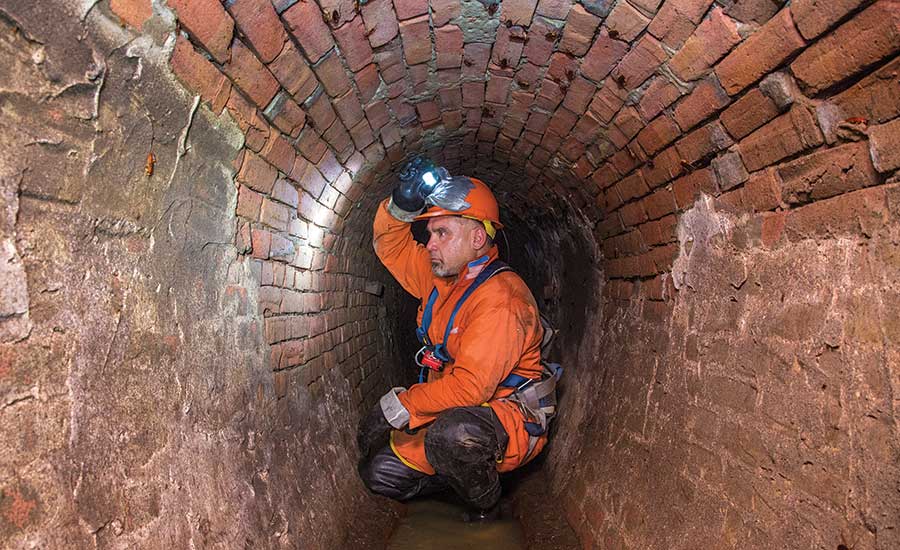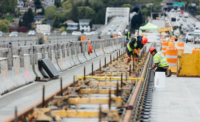When you’ve had enough Snapchat or news of the twitching Bitcoin stock price or the nonstop Inside-the-Beltway reality TV drama, and when you’re tired of the latest big shot exposed as a predator and disgusted with global conflict, we suggest you climb down 15 ft below the streets of a big city into a 3- or 4-ft-wide sewer line and take a close look at what you can see.
You might find some spiritual refreshment.
If you can’t do that, here’s the next best thing: Look at the photo above.
Masonry is no longer used in sewer lines but still exists in older U.S. urban systems, such as in San Francisco, where worker Fred Gonzales services a line built in 1866. Future archaeologists will wonder how people who thrived on electrons fed sewage into pipelines that could have been built by ancient Romans.
ENR's "2017 Year in Construction" Slideshow
The words “American infrastructure” are searched on Google only between 100 and 1,000 times per month on average; but in 2018, infrastructure’s moment may finally arrive in U.S. politics.
Still, some of the most critical projects needed, such as upgrades of aging sewer and water pipes like this one, are not likely to get the attention they deserve.
Labor performed on soaring building frames and mud-clogged foundations testifies to the ingenious human manipulation of the material world.
Elaborate backstage planning, financing and design have also given us structures that don’t breathe carbon into the atmosphere, river-spanning bridges of great grace, flowing water and power we depend on.
Project delivery processes need overhaul, but even if construction hasn’t fully transformed to eliminate costly mistakes, there is a good spiritual purpose served in giving the global industry a giant, multi-image selfie, as ENR's latest construction photo display attests.
We need the built environment almost as much as we need oxygen.
And each school and bridge is cause for celebration, as is the day the last 19th-century masonry water or sewer line finally is retired.



